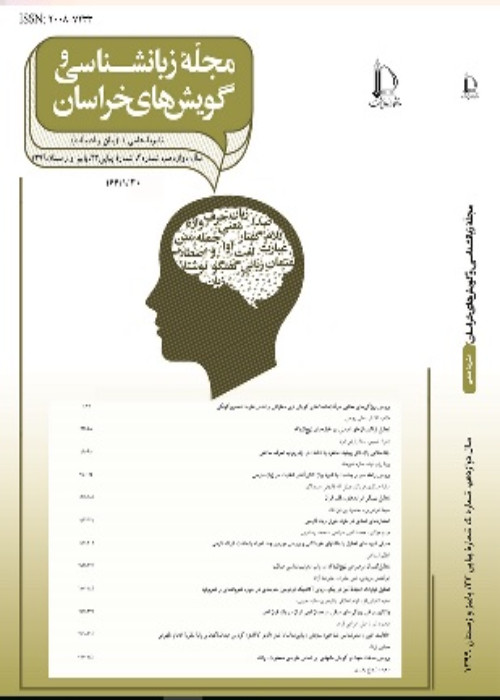The Analysis of the Shaqshaqiya Sermon with Reliance on Sociopolitical Context, Theory and the Principles of Rhetoric
The Nahj al-Balagha is among the most paramount Islamic texts after the Holy Quran, having caught the attention of many researchers in the light of new sciences. Thus, a linguistic analysis of this book can have useful outcomes. Although there are various analytical methods in the field of linguistics, one of the well-founded and common theories in communications analysis is the theory of discourse analysis. One of the widely-used terms in discourse analysis is meta-discourse (Hyland, 2017: 16). The concept of meta-discourse is formed on this view that a writing or speech is a social commitment (Hyland, 2005: 144). Meta-discourse is a new and interesting field, playing an important role in organizing and producing a convincing writing (Amiryousefi and Eslami Rasekh, 2010: 159). Hence, it can be seen as a tool for persuasion in texts. After giving a summary of the main variables, it needs to be noted that a variety of studies having been conducted on the Nahj al-Balagha using different frameworks and approaches such as the theory of speech act (Tabatabaei Lotfi and Ghasemi, 2004), functional approach (Sedighi and Seyesh Mehr, 2005), social psychology and communications (Karampoor et. al., 2005), and the linguistic theory of speech act (Kazemi, 2004). However, the author's examinations in databases show that the framework of meta-discourse markers has been less applied on the Nahj al-Balagha. Moreover, most of the conducted research into the role of meta-discourse markers in language studies has focused on educational aspects, especially on second language writing skills (like Pahlevannezhad and Alinezhad, 2012) and these markers have been much less examined in religious texts in regard to their importance. Hence, there is a research gap in the field of the relationship between discoursal and ideological processes and their interaction with the approaches of persuasion of audiences. Investigating the discourse of Nahj al-Balagha using common discourse models, the explanation of rhetorical principles and the interaction of this discourse and rhetoric can provide big help in developing the valuable principles of Nahj al-Balagha. On the other hand, it should not be forgotten that differences in using meta-discourse markers must be understood not only in connection with the writer's national culture but also in respect of the genre and the discourse community in which the text is written. This research aims to analyze the Shaqshaqiya sermon with the reliance on sociopolitical context, meta-discourse and the principles of rhetoric.
The theoretical framework of this study is based on a hermeneutic triangle Meta-discourse Markers, Principles of rhetoric and sociopolitical context. It relies on the sociopolitical context in which the sermon has been delivered, the determination of meta-discourse markers including interactive and interactional markers (based on Hyland's model, 2005) and the techniques used for the persuasion of persuasion in regard to the fundamental rhetoric methods (ethos, logos and pathos).
The first level of sociopolitical context in which the sermon will be delivered contains important lectures presented by Imam Ali (a.s) in different occasions. In the second level, Hyland's model (2005) is examined, which is comprised of two main interactive and interactional items. The interactive item of meta-discourse deals with the writer's awareness of the audience and his/her efforts to comply with their interests and needs and discuss and argue satisfactorily. On the other hand, the interactional part is related to the writer's efforts to clarify his/her intention and involving the reader through predicting objections and reactions to the text. The interactive part encompasses transitions, frame markers, endophoric markers, evidentials and code glosses while the interactional part includes boosters, hedges, attitudes, self-mentions and engagement markers. In the last level, the issue of rhetoric is analyzed. Aristotle considers rhetoric as the means of persuasion which include three appeals: ethos, logos and pathos.
The Findings of the Shaqshaqiya text showed that transitions with the frequency of 20 and frame and evidential markers with the frequency of 1 were the most and least repetitive interactive markers, respectively. Similarly, attitudes and self-mentions with the frequency of 7 and engagement markers with the frequency of 2 were the most and least repetitive interactional markers, respectively, with no endophoric markers and hedges seen in the text of the sermon. Also, interactive markers were more repetitive than interactional ones.
The results of the analysis indicated that in the Shaqshaqiya sermon transitions were more frequent than other interactive markers. When we look at the relationship between transitions and the topic of rhetoric, logos takes a leading role because the objective of delivering a speech is at first to present a coherent cluster of meanings. Drawing upon code glosses and boosters, Imam Ali (a.s) simultaneously provokes two items of logos and ethos since he both wants the text to be cohesive and he intends to strengthen his position as the speaker through creating strong semantic chains. Attitudes and self-mentions primarily focus on ethos because they are directly related to the individual traits of Imam Ali (a.s) and aim to paint a full picture of him. Such a proportion among the frequency of markers has highlighted the functional aspect of the sermon, the ultimate aim of which is to generate a motivation or psychological warning in the audience so that he/she is encouraged to do something. In the meantime, this sermon maintains its aesthetic features while politically talks of an issue which made Imam Ali (a.s) retreat into silence and keep patience for 25 years. Drawing upon the principles of rhetoric, Imam Ali (a.s) has delivered the speech so well that the audience is convinced he has not preferred his personal interests over the Islamic nations'. Using a wide range of words and laying the groundwork through the principles of rhetoric, he also conveys deep meanings directly or indirectlyDiscussion
- حق عضویت دریافتی صرف حمایت از نشریات عضو و نگهداری، تکمیل و توسعه مگیران میشود.
- پرداخت حق اشتراک و دانلود مقالات اجازه بازنشر آن در سایر رسانههای چاپی و دیجیتال را به کاربر نمیدهد.


